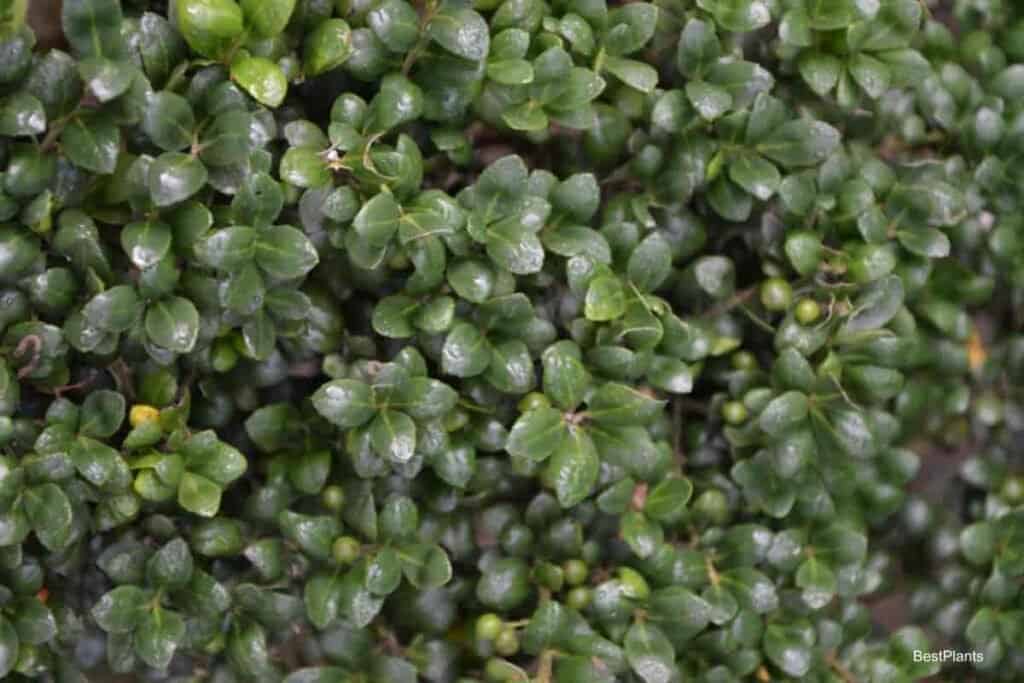The convexed-leaved variety of the Japanese holly is one of the best low evergreens for ornamental planting. In fact, over vast areas of the northern United States, it can be considered the best substitute for the less hardy boxwood. The leaves are about the size of boxwood leaves but slightly curved convexly, hence its name.

Having grown in the United States for about thirty-five years, this variety is now becoming one of the most valued evergreen ornamentals grown. An old plant in the Arnold Arboretum is only about 8’ feet tall but well over 15’ feet across.
Japanese Holly Are Slow Growing
It grows in a slightly vase-shaped fashion hut, like all types of Japanese holly, and can be easily clipped into any form desired.
Because this holly is relatively slow-growing and amenable to clipping, it is excellent for use as a hedge. The price for small plants at most nurseries seems extreme, but since they are slow-growing and take several years before they are saleable plants, they are well worth the cost.
As a specimen plant where it is given plenty of room to expand, this holly is ideal. Also, in the foundation, planting about the house always works well with everything, for it can get kept low or can be allowed to grow tall if height is needed. It is always green.
The dark glossy-green leaves give it a delightful color and texture throughout the year. It is valued because it is not susceptible to serious diseases or insect troubles. The branches are covered with conspicuous black berry-like fruits that persist long into winter.
The spring flowers are not showy. Berried branches may be used in indoor arrangements.
Propagating Japanese Holly
All Ilex crenata types are easily propagated by cuttings, either taken in the late winter and placed in the greenhouse or after the first flush of growth in early summer and placed in the hotbed, which is provided with some bottom heat. These cuttings root quickly.
There is a demand for this plant Wherever it is known, but unfortunately, not all nurserymen grow it. Consequently, a narrow search may be necessary among the nurseries or their catalogs. The botanical name is Ilex crenata ‘convexa’ some nurseries list it as variety bullata.
It will grow in any good soil hut, like most hollies. It does best in soils that are on the acid side. If the soil is alkaline and the plant does not grow well once started (it can grow nearly a foot a year), the soil should be treated to make it acid.
The convex-leaved holly is hardy in all but the coldest parts of the United States. It will grow well in the South, but scorching and dry summers limit its usefulness. It is an excellent all-around evergreen.
